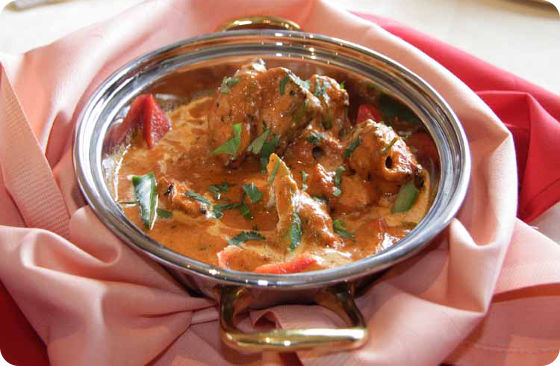Maybe it's the cold of winter or news stories about world conflict, political fighting, and general unrest, but it seems like it's far too easy to spend time focusing on differences and widening the gaps among people the world over. Maybe that's just a sign of our times or it's been that way forever, but I'd like to take a little time to focus on some similarities — in the kitchen. Instead of wondering how foreign anything different might be, let's spend some time celebrating some delicious things we have in common, even when we call them by different names. We're continuing this journey with a look at stews.

Stews are one of those dishes that are easy to recognize and difficult to define. And while it's often a case of you-know-it-when-you-see-it, there are some unifying elements to be found in this king of comfort foods. Comprised of chunks of meat and vegetables, they all boast a strongly-flavored, slow-simmered sauce or gravy that makes it a close cousin to soups. That said, most stews are heartier and can be eaten with a fork — at least, until you are finished with those chunks of deliciousness. Then many people reach for bread or something similar to sop up that amazing flavor. Served warm and in bowls, stews bring comfort and nourishment to us all, no matter where we're sitting down to enjoy them. Here are just a few of the international options that await us:
- In Hungary, goulash is richly-flavored with paprika. Chunks of meat (often beef) and vegetables swim in the spiced gravy. It has become so popular there that it is now the national dish.
- Clay pot cooking is central to preparing food in Vietnam. Their beef stew (also known as bo kho) is bursting with flavor, particularly the sweet fish sauce-infused sauce that typically glazes the dish. It's a wonderful way to use tougher cuts of beef, like short ribs.
- Koreans enjoy a hot (in both temperature and spice level) dish called jjigae. Often made with whatever protein is in season, it can include anything from meat to seafood to tofu. Vegetables are a must, as is the spicy kimchi and a fermented chili paste called gochujang that are served alongside it as condiments.
- Russian beef stroganoff has a bit of a following beyond its borders. It's not hard to tell why. With its tender chunks of beef swimming in a creamy sour cream-based sauce, this hearty dish is often served over thick noodles, but they are not required. Some people enjoy adding onions and mushrooms, although neither are traditionally included.
- The Philippines makes an oxtail stew called kare-kare. It often includes additional meat and vegetables, but has a tell-tale sauce featuring peanuts, shrimp paste, garlic and thickened with rice. It's somewhat reminiscent of a Thai curry.
- Mexican birria is a spicy goat stew that's usually served with corn tortillas, chopped onions, and fresh limes. The meat, in addition to being slow-simmered, is adobo-marinated before cooking. The result is tender, spicy meat that's served all over Mexico.
- Indians enjoy dal makhani, a vegetarian stew based on stewed lentils. Made with tomatoes, cream, and spices, it's a very slow-cooked stew that takes many hours to make. As a result, it tends to be a special dish that's reserved for special occasions and holidays.
- Moroccans make their favorite stew in an earthenware pot called a tajine. Named for this vessels, Moroccan tajines tend to blend lamb, vegetables, and fruit to make a very distinct stew that is both sweet and savory. Olives also tend to factor into tajine recipes.
- Spain's marmitako is a tuna stew that was originally eaten on fishing boats. Today, it finds itself expanded to include potatoes, onions, peppers, and tomatoes. And no fishing boat is required to enjoy this amazing stew!
- Brazilian feijoada is a bean-based stew (usually black beans) that's also made with sausage, beef, pork and veggies, family-style in a thick clay pot alongside rice and orange slices. It is their national dish and a visit to Brazil (or your favorite Brazilian restaurant) should include a bowl of it.
With all of this talk of international comfort food, I'm wondering if you, like me, are wanting to bring a bit of that to your own kitchen. Get recipes to some of the above dishes plus many more in this clever article from SheKnows. Enjoy 21 stew recipes from around the world without having to leave your home!
If you enjoyed this look at a simple cuisine the world over, look for our final segment in this series later this month. Earlier in the month, we took a look at pancakes and we'll be covering one more common dish served the world over before we bid farewell to this series.
